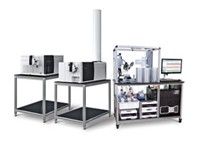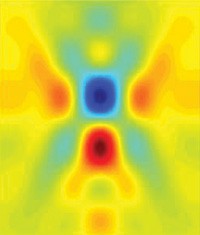Advertisement
Grab your lab coat. Let's get started
Welcome!
Welcome!
Create an account below to get 6 C&EN articles per month, receive newsletters and more - all free.
It seems this is your first time logging in online. Please enter the following information to continue.
As an ACS member you automatically get access to this site. All we need is few more details to create your reading experience.
Not you? Sign in with a different account.
Not you? Sign in with a different account.
ERROR 1
ERROR 1
ERROR 2
ERROR 2
ERROR 2
ERROR 2
ERROR 2
Password and Confirm password must match.
If you have an ACS member number, please enter it here so we can link this account to your membership. (optional)
ERROR 2
ACS values your privacy. By submitting your information, you are gaining access to C&EN and subscribing to our weekly newsletter. We use the information you provide to make your reading experience better, and we will never sell your data to third party members.
Analytical Chemistry
Inside Instrumentation
Technology and business news for the laboratory world
by Celia H. Arnaud and Ann M. Thayer
March 9, 2009
| A version of this story appeared in
Volume 87, Issue 10
CEM Launches Two Microwave Instruments
CEM Corp. has introduced a new microwave synthesizer and a new peptide cleavage system. The Explorer-12 Hybrid is the smallest automated microwave synthesizer commercially available, the company says. It can run both open-vessel reflux and pressurized reactions. The sample deck holds up to 12 10-mL or six 35-mL pressurized vials. The company’s new Accent Cleavage System can perform a full peptide cleavage in less than 30 minutes and accepts 4-, 25-, and 35-mL vessels.
Companies Open Demonstration Sites
Thermo Fisher Scientific is targeting petrochemical industry customers with a new demonstration lab equipped with a range of X-ray spectrometry equipment. Located on the U.S. Gulf Coast, the Sugar Land, Texas, facility houses energy-dispersive and wavelength-dispersive X-ray fluorescence spectrometers, along with other instruments, consumables, and software. Millipore, meanwhile, has opened a new biomanufacturing sciences and training center in Singapore’s Science Park. Customers throughout Asia can use the facility for support and technical service in areas such as separations and purifications.
Dolomite Adds To Microfluidic Chips
To expand the range of applications in which microfluidics can be used, Dolomite is offering glass and polymer microfluidic chips with integrated metal electrodes. The company can deposit a variety of metals—including platinum, gold, copper, titanium, and chrome—onto the chips in layers between 50 nm and 1 µm thick and with feature sizes as small as 2 µm. Electrode geometries can be created for heating, detecting impedance, and sensing temperature in microreactors or for generating electrical fields for dielectrophoresis. Metal layers also can be deposited on the inside surface of microchannels to create optical flow cells or metal surfaces for catalytic reactions.
Multiple Detectors Improve Flash Unit
Grace Davison Discovery Sciences, a division of W. R. Grace, has launched the Reveleris, a flash chromatography system for sample purification. The Reveleris uses multiple detectors—two ultraviolet detectors and an evaporative light-scattering detector—to recognize peaks better and trigger the collection of more fractions. The cartridges used with the system can withstand pressures of 200 psig and have a greater capacity than other cartridges.
NanoInk Offers New Fabrication Systems
NanoInk has introduced two desktop nanofabrication systems, the NLP 2000 for making nanoarrays and the DPN 5000 for nanopatterning. Both use dip-pen nanolithography to deposit materials, ranging from metal nanoparticles to biomolecules. The DPN 5000 comes equipped with microelectromechanical systems-based items such as probes, probe arrays, inkwells, and substrates to be written upon. It can be coupled with an atomic force microscope to image and immediately characterize deposited nanoscale patterns. With the NLP 2000 system, users can create nano- to microscale features on custom-engineered and functionalized surfaces. The system uses an array of pens to write simultaneously over areas as large as 40 by 40 mm on different types of substrates. Multiple materials also may be deposited at one time.
Companies Unveil Plans For Faster, Cheaper DNA Sequencing
At last month’s Advances in Genome Biology & Technology meeting in Marco Island, Fla., two genomics companies revealed developments in their technologies that will improve human genome sequencing. San Diego-based Illumina unveiled a “development roadmap,” showing how it plans to generate 25x coverage of a human genome for less than $10,000 by the end of this year. What can now be done in three flow cells will be possible in a single cell, says David Bentley, Illumina’s vice president and chief scientist of DNA sequencing. Such increased efficiency will be achieved by advances in chemistry, hardware, and sequencing algorithms. At the same time, Complete Genomics, based in Mountain View, Calif., released proof-of-concept data for its third-generation human-genome-sequencing technology, which features high-density arrays of DNA nano-balls (clusters of amplified DNA with more than 200 copies of a circular template) and a type of read technology called combinatorial probe-anchor ligation. The company obtained 91x coverage of a Caucasian HapMap sample. Complete Genomics’ technology will be commercially launched in June.
Celia H. Arnaud and Ann M. Thayer write Inside Instrumentation. Contact them via e-mail to instrumentation@acs.org.








Join the conversation
Contact the reporter
Submit a Letter to the Editor for publication
Engage with us on Twitter